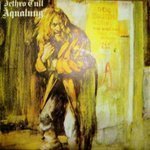[Myanmar] Hispaw Haw—Abode Of Tragic Shan Prince
-
Recently Browsing 0 members
- No registered users viewing this page.
-
Topics
-
-
Popular Contributors
-
-
Latest posts...
-
19
Obtaining Kor Ror 22, is a trip to MOFA in Bangkok required?
Get married again in ban rak. 👍 -
110
KPlus is now almost useless to me after 4 years without issues they impose this on me
of course you were able to do that on July 2, the 50k daily limits didn't come into effect until July 8th. Did you read that part of my reply or not? It would seem not. -
0
AI, Fake News Take Centre Stage at Asia Media Summit in Siem Reap
Information Minister Neth Pheaktra. KT Cambodia has kicked off the 20th Asia Media Summit in Siem Reap, bringing together media professionals, policymakers, and experts from 29 countries to tackle some of the most pressing challenges facing the media industry — including disinformation, digital transformation, and the disruptive rise of artificial intelligence. Held under the theme “Celebrating Two Decades of Excellence and Beyond,” the four-day summit opened Monday at the Sokha Siem Reap Resort & Convention Centre. It marks the second time Cambodia has hosted the prestigious regional gathering. Information Minister Neth Pheaktra told reporters that Cambodia would showcase its efforts to combat fake news, citing over 3,600 cases recorded last year — a 14% rise on the previous year — spanning issues from national security to tourism and politics. “This summit is not only about recognising the past 20 years but preparing for the next 20,” said Kem Gunawadh, Secretary of State at the Ministry of Information. “AI, digital journalism, and cross-border collaboration are at the heart of this conversation.” A packed agenda of plenaries and workshops explores themes such as the role of governments and media in tackling disinformation, building trust, and harnessing technology to improve accessibility. Among the highlights is the AIBD/VIORY Digital Newsroom Masterclass, which trains journalists in innovative storytelling, audience engagement, and newsroom management in the digital age. Also featured is a regional workshop focused on technology-driven accessibility, where participants will examine how emerging tools can make media more resilient and inclusive. Philomena Gnanapragasam, head of the Asia-Pacific Institute for Broadcasting Development, reflected on the summit’s legacy: “We are confronted by a fast-changing landscape that demands resilience, innovation, and integrity.” As global media navigates the twin pressures of AI disruption and a credibility crisis, the summit aims to foster regional unity, information diplomacy, and practical solutions to challenges that increasingly transcend borders. With the digital future arriving faster than many expected, Siem Reap has become this week’s focal point for how Asia’s media responds. -2025-07-22 -
23
Question regarding 90 days report
i think you will find that your report date is 13th Oct, day of entry is day 1. -
110
KPlus is now almost useless to me after 4 years without issues they impose this on me
On July 2, that is when the facial recognition was active already, I transferred 800.000 Baht to another bank, using the Kbank app I had to take a selfie for the transfer to go through. I never visited my branch -
110
KPlus is now almost useless to me after 4 years without issues they impose this on me
I'm surprised you were able to change your limits after July 7 as both my ttb and krunthai banks have blocked access to that in the settings. After speaking with both banks the ONLY way I can have my previously preset limits reinstated is to visit the branch in person and have the branch staff do it.
-
-
Popular in The Pub





.thumb.jpg.3ee24d9400fb02605ea21bc13b1bf901.jpg)

.thumb.jpeg.d2d19a66404642fd9ff62d6262fd153e.jpeg)



-400.thumb.jpg.0ca958f9cd678464b41f3058bc084808.jpg)


Recommended Posts
Create an account or sign in to comment
You need to be a member in order to leave a comment
Create an account
Sign up for a new account in our community. It's easy!
Register a new accountSign in
Already have an account? Sign in here.
Sign In Now